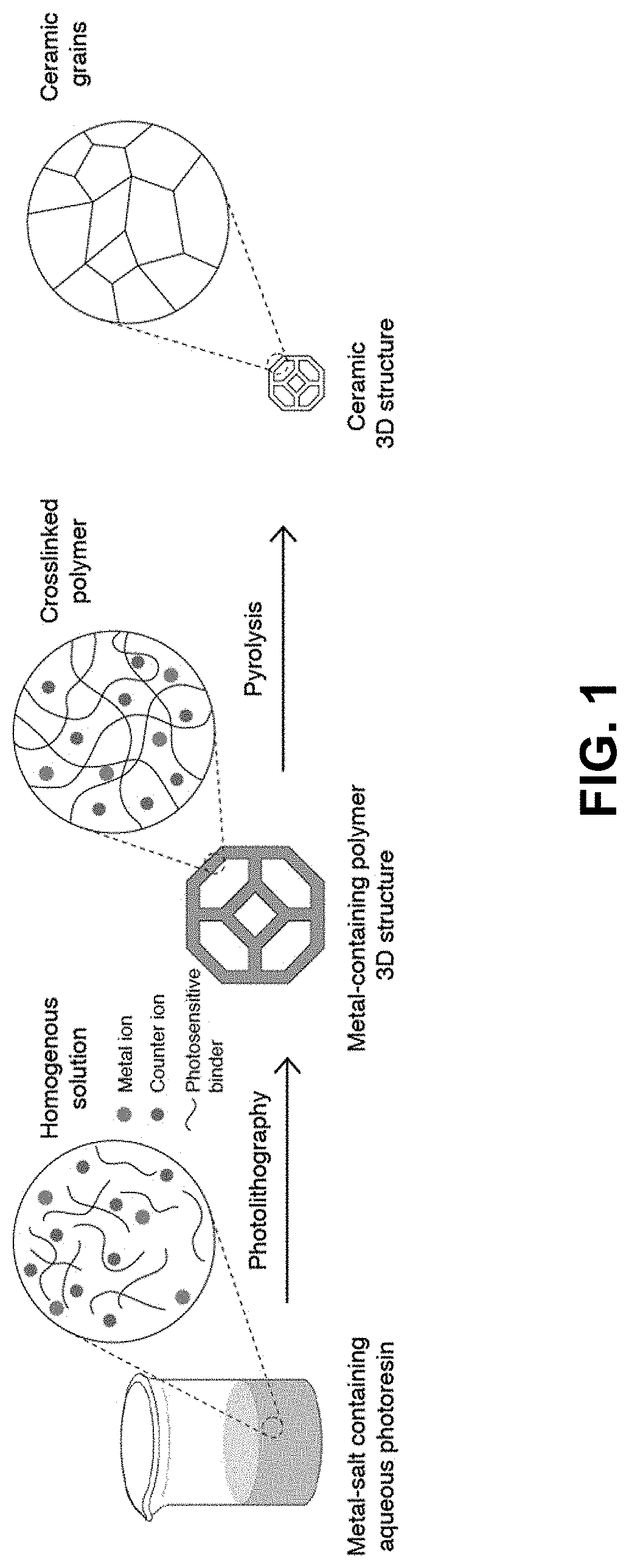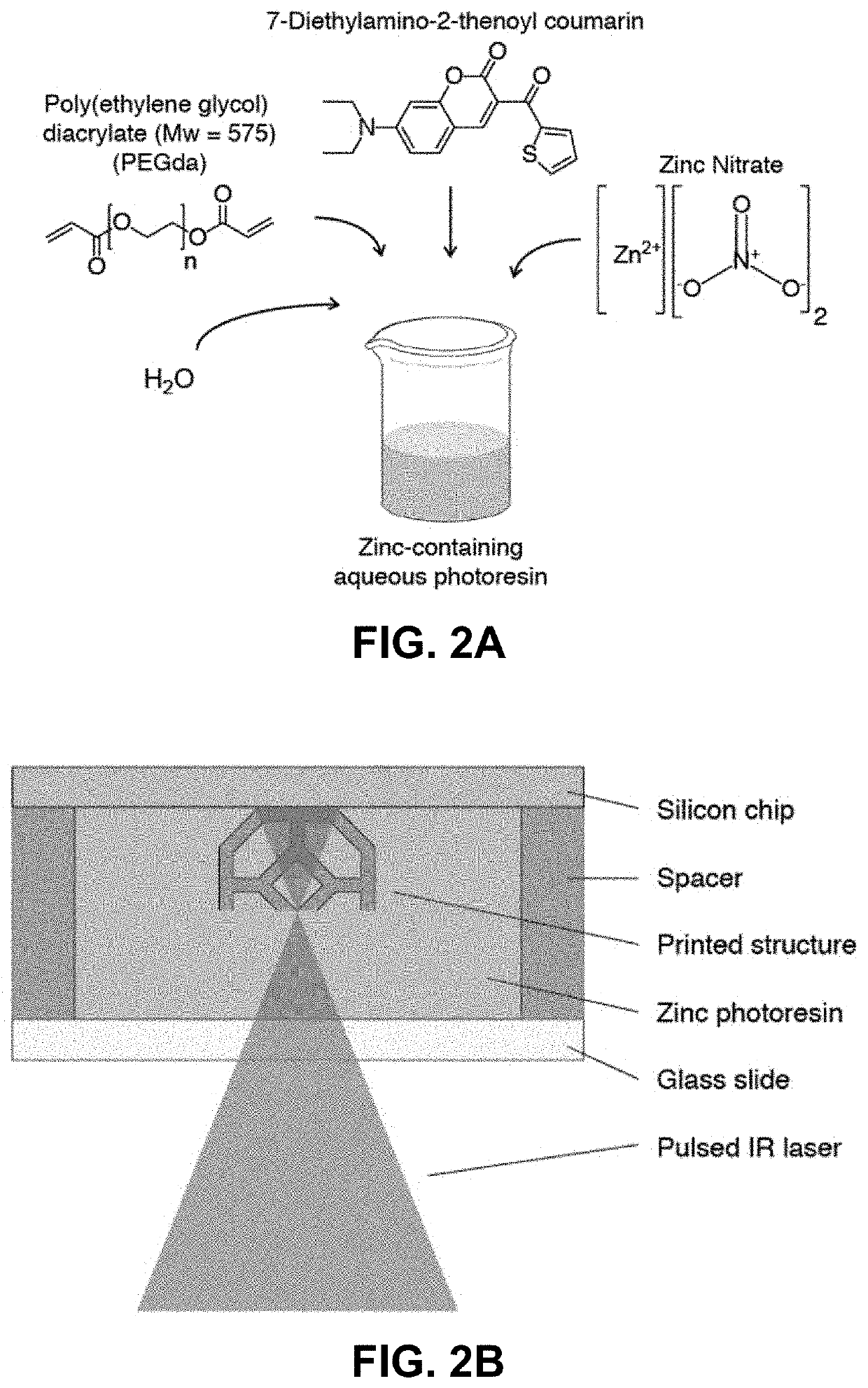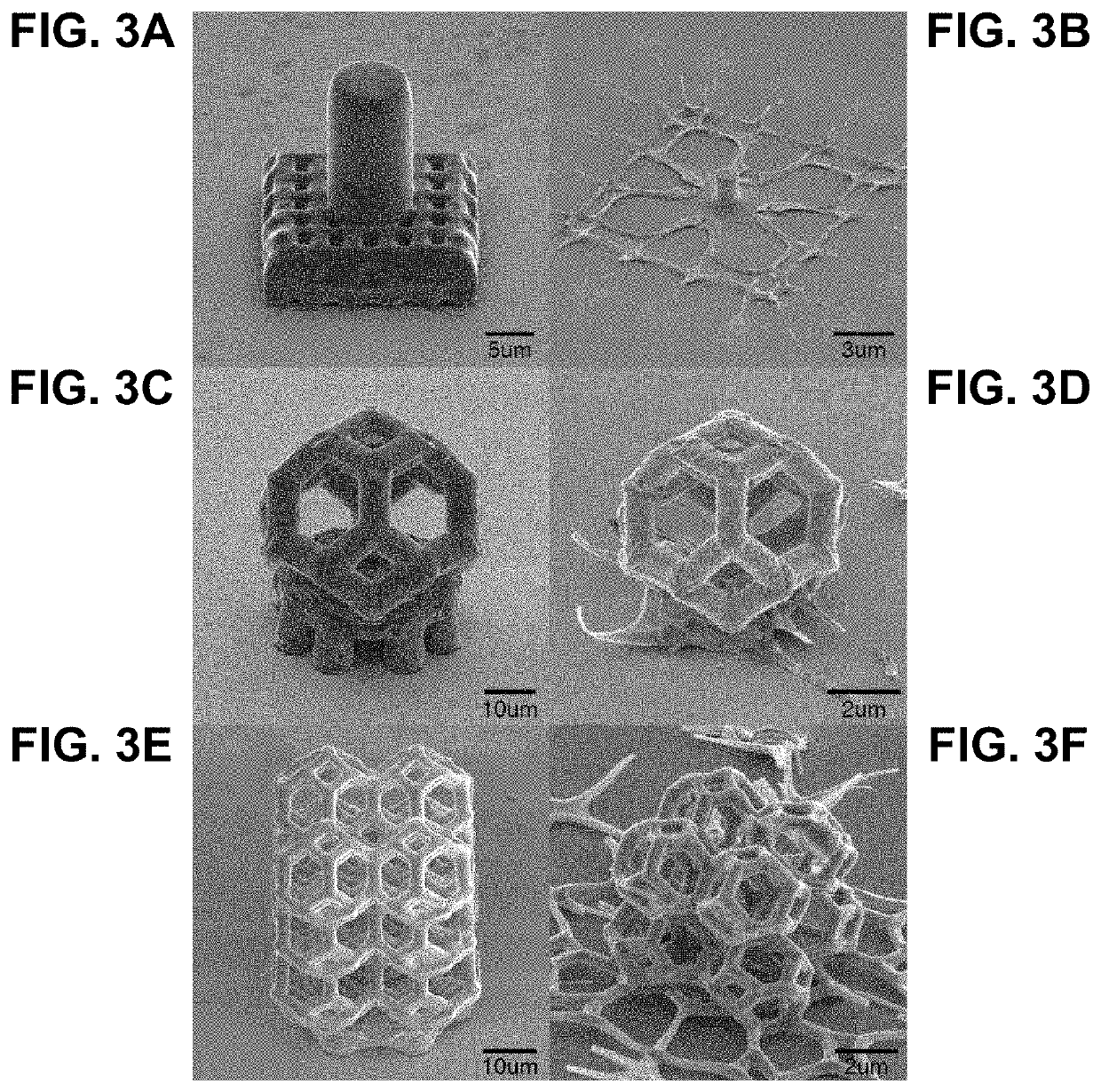3D printing of metal containing structures
a metal containing structure and 3d printing technology, applied in the direction of instruments, cell components, calcination, etc., can solve the problems of limited additive manufacturing processes, limited geometries and/or compositions of conventional methods for manufacturing ceramics and/or metal materials, etc., and achieve the effect of increasing performan
- Summary
- Abstract
- Description
- Claims
- Application Information
AI Technical Summary
Benefits of technology
Problems solved by technology
Method used
Image
Examples
example 1
ng of Metal Containing Structures Via a Metal Salt-Containing Aqueous Photoresin
[0164]This example presents a method of manufacturing metal-containing materials via a two-step process: a) fabrication of a metal-containing hydrogel material via photolithography of a metal-salt containing aqueous photoresin and b) thermal treatment (e.g., pyrolysis or calcination) of the aforementioned preceramic hydrogel material.
[0165]Demonstrated here are simple inexpensive method to fabricate 3D printed metal-containing structures via a multistep process where first, a metal-containing hydrogel part is printed via photolithography from an aqueous photoresin, followed by thermal treatment (e.g., pyrolysis) of the aforementioned metal-containing hydrogel. The aqueous photoresin (or, aqueous precursor mixture) is a homogenous mixture of dissolved metal salts, water and water-soluble binders, photoinitiators and UV blockers. Advantageous of this process include that any water-soluble metal salt can be...
example 2
e Structures Fabricated Via a Two-Stage Process of Two-Photon Lithography Followed by Thermal Treatment (e.g., Calcination)
[0170]1) Preparation of Metal-Salt Containing Aqueous Photoresin (an Aqueous Precursor Mixture)
[0171]To make zinc oxide, zinc ions need to be present in the aqueous precursor mixture. Thus, zinc nitrate was chosen as the metal salt of choice to be dissolved in the aqueous precursor mixture. 5 g of zinc nitrate hexahydrate is first dissolved in 1 mL of water. To this mixture, 2.67 mL of poly(ethylene glycol) diacrylate (Mn=575 g / mol) (PEGda) is added. A clear homogenous mixture is obtained. In a separate vial, 5.4 mg of 7-diethylamino-3-theonyl coumarin (DETC) is added to 400 μL of dimethyl sulfoxide to produce a yellow mixture. 50 μL of the DETC mixture is then added to 500 μL of the zinc / PEGda mixture to obtain an orange mixture. This is represented schematically in FIGS. 2A-2B.
[0172]2) Two-Photon Lithography of the Zinc Nitrate PEGda Aqueous Precursor Mixture
[...
example 3
obalt Oxide Structures Fabricated Via a Two-Step Process of Projection Micro-Stereolithography Followed by Calcination
[0190]1) Preparation of Metal-Salt Containing Aqueous Precursor Mixture
[0191]To make lithium cobalt oxide, it is not only necessary to have lithium and cobalt ions, it is also important that they are present in equal amounts. Thus, lithium nitrate and cobalt nitrate hexahydrate are chosen as the metals salts of choice for this example and added such that the ratio of Li to Co ions was 1:1. 20 mL of a 5M cobalt nitrate hexahydrate mixture was added to 20 mL of a 5M lithium nitrate mixture. To that, 60 mL of poly(ethylene glycol) diacrylate (Mn=575 g / mol) was added and then stirred. The resulting mixture was a deep purple color. In a separate vial, 343.5 mg of lithium phenyl-2,4,6-trimethylbenzoylphosphinate and 328.7 mg of disodium 4,4′-bis(2-sulfostyryl)biphenyl was added to 9 mL of water, resulting in a yellow mixture. Both mixtures re then added together to give th...
PUM
| Property | Measurement | Unit |
|---|---|---|
| Fraction | aaaaa | aaaaa |
| Fraction | aaaaa | aaaaa |
| Fraction | aaaaa | aaaaa |
Abstract
Description
Claims
Application Information
 Login to View More
Login to View More - R&D
- Intellectual Property
- Life Sciences
- Materials
- Tech Scout
- Unparalleled Data Quality
- Higher Quality Content
- 60% Fewer Hallucinations
Browse by: Latest US Patents, China's latest patents, Technical Efficacy Thesaurus, Application Domain, Technology Topic, Popular Technical Reports.
© 2025 PatSnap. All rights reserved.Legal|Privacy policy|Modern Slavery Act Transparency Statement|Sitemap|About US| Contact US: help@patsnap.com



